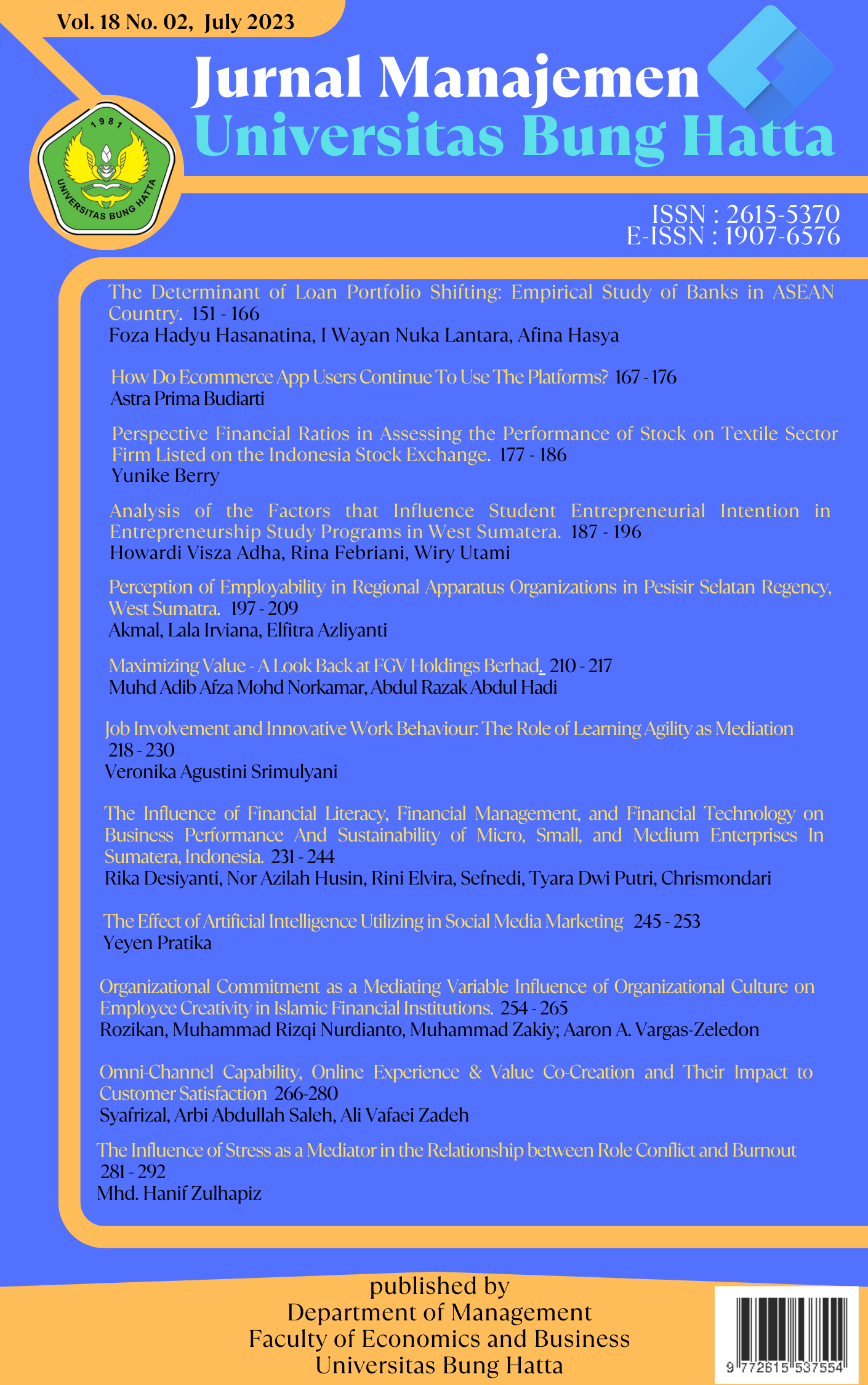Maximizing Value - A Look Back at FGV Holdings Berhad
DOI:
https://doi.org/10.37301/jmubh.v18i2.23206Abstract
This paper explores a number of relevant capital structure theories that may help explain the real market occurrence. The debt-equity ratio is commonly utilized as a variable of interest by many to evaluate the viability of company’s capital structure. Based on Modigliani-Miller Trade-Off theory (1958), their major goal is to examine how firm-specific capital structure determinants may impact the company's capital structure choice. It is essential to comprehend how firm-specific factors could exert a direct impact on a company's share price in both the short and long run. In the case of FGV Holdings Berhad, its capital structure composition has shifted from equity-weighted to debt due to FGV's improved cash flow situations, allowing them to secure wider options of financing from the capital markets. As a result, the company's total debt to total assets ratio has risen dramatically to 76.4 percent. However, it is vital to note that FGV's debt interest payments are not adequately supported by profits before interest and tax (EBIT). Debt financing invariably requires interest payments, regardless of whether it is provided through the bond or banking markets. The net result could jeopardize the company’s value through declining share price. The Trade-off theory is seen ideal in explaining the financial conditions in FGV. It is important to balance out the benefits of debt against the costs of debt at all times. Overall, FGV's top management should consider conducting a thorough review on its entire capital structure since the debt levels have climbed dramatically since 2014, along with a declining cash level in mid-2014.
References
FGV Annual Report (2018). Company Overview. Retrieved from http://fgv.investors-centre.com/investor-relations/interactiveAR2018/84/
Friend, I., & Lang, L. H. P. (1988). An Empirical Test of the Impact of Managerial Self-Interest on Corporate Capital Structure. The Journal of Finance, 43(2), 271–281. doi: https://doi.org/10.1111/j.1540-6261.1988.tb03938.x
Kane, A., Marcus, A.J., & McDonald, R.L. (1984). How Big is the Tax Advantage to Debt? The Journal of Finance, 39(3), 841-853.
Luigi, P., & Sorin, V. (2009). A REVIEW OF THE CAPITAL STRUCTURE THEORIES. Annals of Faculty of Economics, 3(1). Retrieved from https://www.researchgate. net/profile/Sorin/Visinescu/publication/41163549_A_REVIEW_OF_THE_CAPITAL_STRUCTURE_THEORIES/links/55266c740cf2628d5afdf2fd/
Modigliani, F., & Miller, M.H. (1958). The cost of capital, Corporation Finance and the Theory of Investment. The American Economic Review, 48(3), 261-297.
Myers, S. C. (1984). The Capital Structure Puzzle. The Journal of Finance, 39(3), 574–592. doi: https://doi.org/10.1111/j.1540-6261.1984.tb03646.x
Muhamed Noor, N. H. F., & Abdul Hadi, A. R. (2021). Case Analysis: FGV Holdings Berhad. Ekonomi dan Bisnis, 8(1), 70-77. doi: https//doi.org/10.35590/jeb. v8i1.2770
Ying, C. C. (1966). Stock Market Prices and Volumes of Sales. Econometrica, 34(3), 676. doi: https://doi.org/10.2307/1909776
Downloads
Published
Issue
Section
License
Copyright (c) 2023 Muhd Adib Afza Mohd Norkamar, Abdul Razak Abdul Hadi

This work is licensed under a Creative Commons Attribution-ShareAlike 4.0 International License.
Authors who publish with Jurnal Manajemen Universitas Bung Hatta agree to the following terms:
- Authors retain copyright and grant the journal right of first publication with the work simultaneously licensed under a Creative Creative Commons Attribution-ShareAlike 4.0 International License that allows others to share the work with an acknowledgement of the work's authorship and initial publication in Jurnal Manajemen Universitas Bung Hatta.
- The author holds the copyright of the submitted and published articles, with the understanding that articles are disseminated under the Creative Commons Attribution-ShareAlike 4.0 International License..
- The editor team is entitled to do the editing in accordance with the guidelines for writing or template in the Jurnal Manajemen Universitas Bung Hatta.
This work is licensed under a Creative Commons Attribution-ShareAlike 4.0 International License.












